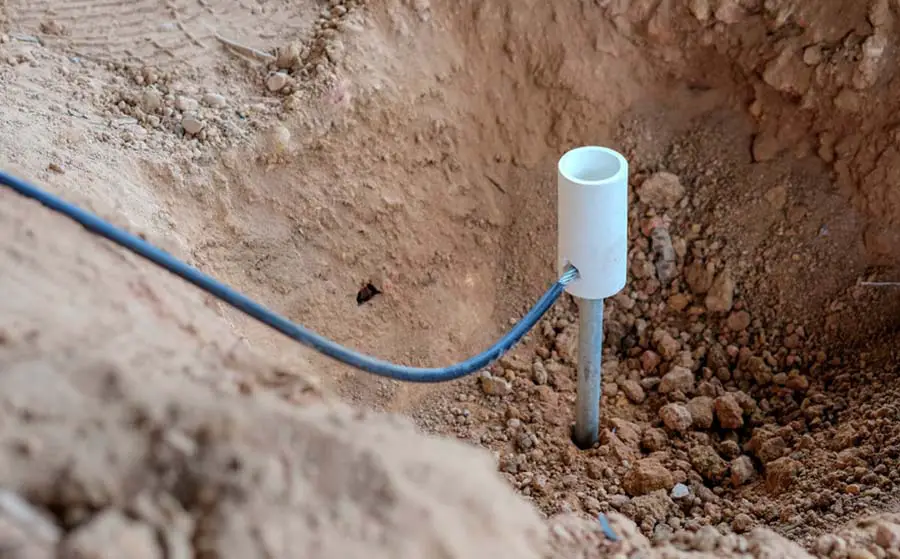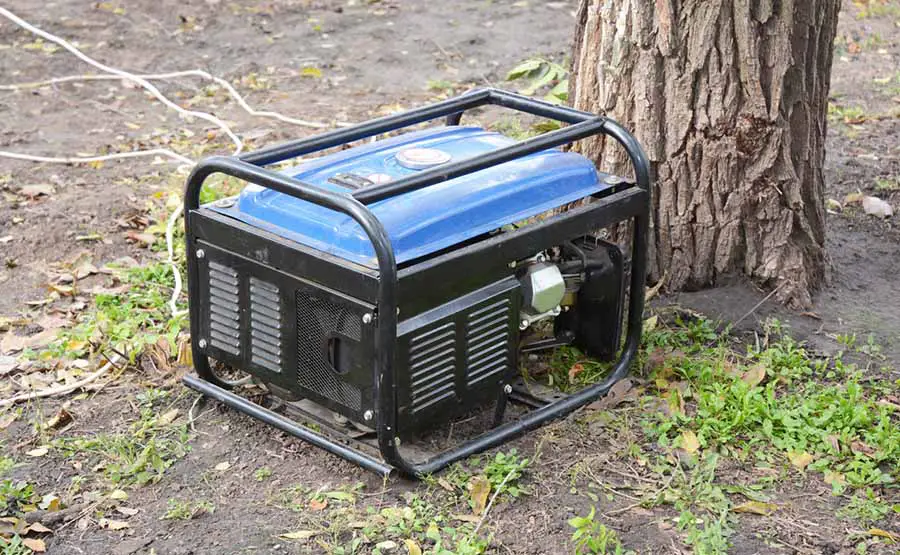
While installing your portable generator for the first time, you will find yourself with a collection of cables and parts that can give you a headache. One of the most necessary cables you will need to connect is the ground cable, which can cause quite a few people problems.
Your portable generator’s frame will serve as the best grounding purpose for your generator if you are moving it around often. To ground without relying on the frame, you must have a copper spike driven into the ground with a cable connected to the ground mounting spot on the generator.
Despite how important it can be to ground most electrical devices because the generator provides power properly, it can be more complicated. Understanding when to ground the generator, how to do it step-by-step, and why it’s necessary is vital to have your system running for a long time.
Grounding a Generator Through a House
When using your portable generator, even the latest types, you will shut the main power switch to your home. This breaks the line of power that your house receives from the municipality. Otherwise, the power you are generator would leak into the grid and cause a lot of issues.
The ground wire going to your house will also be connected when switching off your main power switch. The ground line of your home’s electrical system connects to the power monitor that your house uses, allowing any short circuits or surges to bypass your house if it does happen.
Many people assume that the ground wire will stay connected when they switch the mains to their house. Fortunately, when using your generator, you will rarely cause a surge large enough to destroy any of the electrical appliances in your house immediately.
Tools Needed for Grounding a Generator
The right tools needed must be collected to correctly complete any setup or installation, with many people usually forgetting to have everything ready. The tools and parts needed to ground your portable generator are generally not something most people have lying around.
You will need to have read and near you seven things when building the structure to ground the generator—having all of these ready before you will allow you to complete the project and have the system running safely within a few minutes of work.
- Copper Rod: The most important part of the system is the rod you will use to divert the electricity into the ground. A good copper rod or a copper pipe will easily divert the power into the ground; usually, around 10mm to 30mm will work.
- Copper Wire: It should go without saying that you will need a copper wire; however, the normal thin wire will burn up. It would help if you had thick, high voltage copper wire that is usually used in power systems; make sure it is a solid wire, not multiple that can be twisted.
- Hammer: No rubber hammer or softer hammer that will shatter as you hit the copper rod; it is best to have a hardened steel hammer. The rod or pipe you are using will need to be hit into the ground; usually, the ground is too hard to push the rod in simply.
- Wire Stripper: You can use a sharp knife, side cutter, or even just new tongs to strip the wire on both ends. However, we recommend having a wire stripper that can quickly and comfortably remove the plastic within a second.
- Pliers: Every house and toolbox should have at least a small pair of pliers, allowing you to bend the wire as you will need to quickly. As soft as copper is, the thicker wires required to ground a portable generator can easily be tough to twist.
- Screwdrivers & Sockets: Depending on the type of generator you have, there will either be a screw or bolt that you can loosen to connect the wire to.
How to Ground Your Generator

Now that you know what tools you will need, what equipment is required, and what kind of wire you need, you need some steps. Fortunately, we have done this process, and we know how to ground a portable generator within a few minutes, as the process should not take long.
We will have your generator ready and rearing to go for any of the most unpredictable surges that you may be expecting in three steps. Despite how intimidating it may sound and how confusing it can be to do something to your generator, this is actually one of the easiest things to do.
Install the Rod
We recommend doing this first; installing the rod should only take around a minute, ensuring that you correctly insert it into the ground. It is always better to have your generator already adequately placed when you consider where you will be putting the copper rod.
If your generator is quite far away from any loose soil or earth, you will need to have the rod or pipe somewhere it will be grounded. For this reason, you should place your generator somewhere outside; having to route the power is safer than having to route the ground line.
Strip and Route the Wire
Before stripping the wire, you should measure how much you will need, preferably installing the wire completely, using any straps or bolts you may have. Once the wire is routed correctly and ready to be used, you should strip both ends with your wire stripper.
People who strip the wire before routing the cable must usually cut a new piece of wire. This happens because the wire is usually just a few inches too short, causing headaches as everything else will already be wired and connected to the generator.
Attach Wire to Generator Ground Bolt and the Rod
Now you need to connect the rod already connected in the ground and generator. On the generator, make a loop with the wire and bolt through it. The rod twists the wire around it two to three times, ensuring that it cannot merely go loose when touched.
You must ensure that the wire makes clean contact with both the wire and the generator, allowing you to leave them comfortably. From here on, the surging or failing electricity will automatically flow through the line and into the ground.
Why Do You Need to Ground Your Generator?
Sometimes, when producing electricity, there will be small power surges when something draws too much or stops using the power. This surge of energy cannot always be absorbed by the powerlines of the house and can cause fires or damage to the electrical appliances inside.
By grounding the portable generator, you will divert any power surges made by the machine into the ground. These surges can be extremely high voltage and are almost impossible to predict, with even the most modern systems having some safety systems.
If your generator has a large metal frame around it, you will not need to ground it; the manufacturer will already let everything be grounded through that. The machine should be on a flat surface that is not insulated, allowing the metal frame to connect directly with the earth.
Conclusion
Your generator will happily ground itself through the iron or steel frame that it has, with even the oldest generators having this setup. However, if you would like to properly drop the machine or have an extra layer of security, having it grounded using a wire and rod is always good.
Whatever you do, please don’t put the copper rod or pipe in an area where you know you or children may walk; no one wants a stubbed toe!

